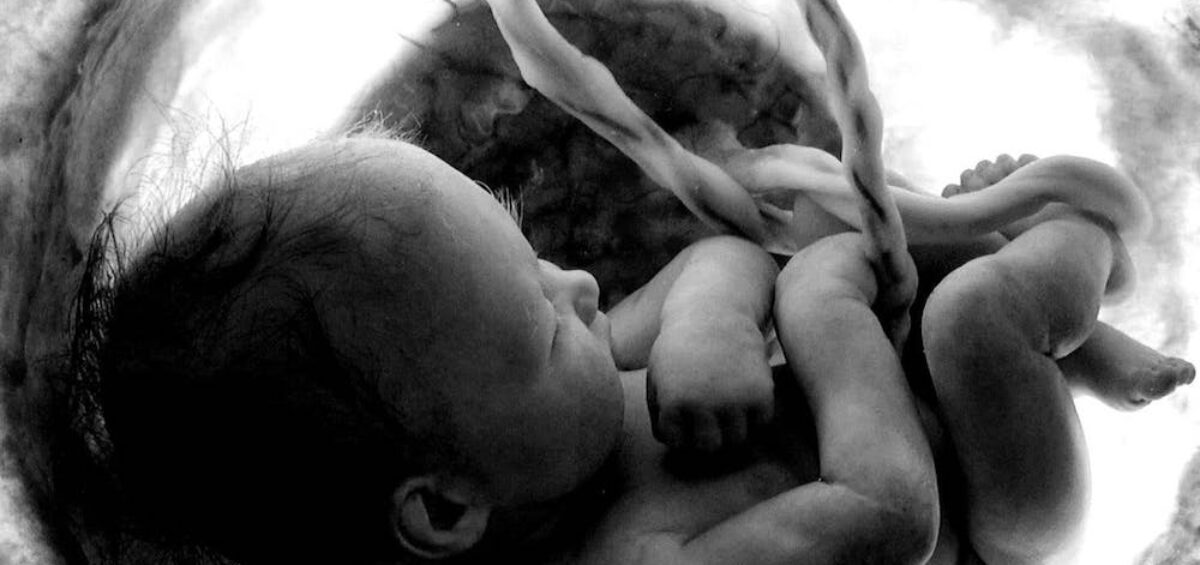Abortion is inherently different from other medical procedures because no other procedure involves the purposeful termination of a potential life. Supreme Court Justice Potter Stewart
I spent much of my professional life working to help premature babies survive. My religious sensitivities and my professional work lead me to abhor abortion except in cases when a continued pregnancy jeopardizes the mother’s life or health. I freely admit my religious objections establish the primary reason for my abhorrence of abortion. At the same time, I do not think Roe v Wade, which in 1973 established the Constitutional right for women to have abortions, should be overturned. Thus, another instance of my cognitive dissonance.
A Quick Summary of Development
Conception refers to the union of a mother’s egg cell with a sperm cell. This union occurs in one of the mother’s two fallopian tubes. The fertilized egg, or zygote, moves down the fallopian tube toward the uterus, a process that can take up to a week to complete.
Cell division within the zygote typically begins 24 – 36 hours after conception before the zygote exits the fallopian tube. The zygote first divides into two cells, then four, eight, sixteen and so on. Notably, as many as half of all zygotes survive less than two weeks. The cell division progresses at a rapid rate leading to formation of a blastocyst. Once in the uterus, the blastocyst attaches to the uterine wall. The term, implantation, refers to this attachment. Only an estimated 40 percent of blastocysts from natural conceptions become properly implanted in the uterus. Thus, 60 percent of pregnancies end before the mothers know they are pregnant.
A surviving blastocyst develops into an embryo. By the eighth week of pregnancy, the embryo has all the basic organs and parts except for the sex organs. The embryo at this developmental stage weighs one gram, measures about one inch in length, and is designated a fetus. Fetal development continues until birth. Importantly, however, post-natal development continues. For instance, the post-natal brain grows to about four times its size between birth and preschool.
Life
All living organisms:
(1) Are made up of cells
(2) Use energy, i.e., have a metabolism
(3) Maintain homeostasis, i.e., the internal environment of the organism is regulated in order to maintain a stable state
(4) Respond to stimuli
(5) Reproduce
(6) Adapt to changes in the environment
(7) Pass their genes to offspring.
Where in the process from conception onward can we say the new human is truly alive as opposed to potentially alive? As development goes forward, the probability for a live birth increases and more of the characteristics of life appear. Modern medicine with all of its technological advances has pushed back the potential for a live birth to the 21st week of pregnancy, albeit with application of heroic measures to save the life of the premature infant. I think life, actual as opposed to potential, begins for the newborn infant with the first post-natal breath, either spontaneously or through assisted ventilation.
Viability, as used in United States constitutional law, refers to the potential of the fetus to survive outside the uterus after birth, natural or induced, when supported by up-to-date medicine. Sometimes the line between life and viability blures. In some countries, newborns—principally premature infants—receive the benefits of modern technology for 30 days after birth. At the end of this period, the babies are removed from all life support and allowed to die.
I recognize the growing movement to declare the beginning of fetal life with the appearance of a functional brain at about eight weeks of gestation. This idea resonates with some people because we often define the end of life as the absence of brain activity. Nevertheless, I prefer the first breath definition because a fetus/newborn can exhibit brain activity without the ability to breathe.
Ensoulment
In religion, ensoulment refers to the moment at which a human being gains a soul. Some people argue for creation of a new soul within pre-natal development; other persons argue that the soul pre-exists and joins the new human at a particular stage of development. As with the definition of when life, or the potential for life, occurs, estimates for the moment of ensoulment range from conception to the first post-natal breath. The argument comes to us from antiquity; Aristotle expounded upon the issue by stating the human soul entered males at 40 days of gestation and females at 90 days. The idea that life and ensoulment begin with the first post-natal breath circumvents arguments about what happens to the soul of a fetus that, for instance, spontaneously aborts.
Some religions decry the especially heinous nature of abortion because the procedure leads to the death of a human being with a soul. Of course, the issue of ensoulment lacks relevance for non-religious persons.
Roe v Wade
One of the alleged problems with the confirmation of Judge Brett Kavanaugh to Justice of the Supreme Court (SCOTUS) focused on the concern he would join with other conservative justices and reverse Roe v Wade. We must ask where the opposition to Roe v Wade originates? I think this opposition derives from the premise that life begins at conception and, therefore, abortion amounts to murder.
I admit ethical and moral concerns without religious content could account for some objections to abortion. I believe, however, the primary opposition to Roe v Wade comes from sincerely religious persons. If so, the religious opposition to Roe v Wade and thereby to Justice Kavanaugh’s confirmation does not meet Constitutional muster. An originalist reading of the plain words of the Constitution (strict rather than loose Constitutional constructionism) prohibits religiously based laws. Regrettably, for some people, we live in a secular culture, which by Constitutional edicts prohibit religiously based laws and enforcement of those laws by the might of our government. We should have learned by now that morality cannot be enforced through legislation, especially if the majority of citizens do not support that legislation.
Some people maintain the settled nature of Roe v Wade prohibits the reversal of this law. That concept ignores Constitutional history in which the Supreme Court has overturned its previous rulings. At best, Roe v Wade constitutes precedence, not inviolability like the laws of the Medes and Persians. Although I do not think Roe v Wade should be overturned, the prospect of elective abortions after the first trimester profoundly disturbs me. I recognize the intellectual inconsistency of my position.
Many religiously oriented people who face the reality of Roe v Wade object to the Federal government financially supporting abortion for citizens who lack the means to pay for the procedure. Such advocacy overlooks the economic and social costs of failing to support women who need, or even desire, an abortion. Similarly, failure to provide contraception to women of reduced financial resources involves economic and social costs.
The decision whether or not to have an abortion must rest primarily with the mother. After conception and until birth, survival of the new being depends on the mother’s body. The father may feel he has a stake in the developing new being; however, that stake should be manifest by providing adequate nutritional, emotional, and monetary support to the mother. Importantly, once the father has donated the sperm, the developmental process can proceed without him.
Under the Constitution, persons classified as pro-choice or anti-choice with respect to abortion may exercise their right to speak out in support of their opinion without violence. Persuasion, with or without religious content, can change hearts and minds resulting in changes to behavior. Even with Draconian consequences for violation, laws, can only moderate behavior absent changes in belief. For instance, we have laws against murder that incorporate extremely harsh punishment, yet people continue to commit murder. By analogy, even if Roe v Wade were to be reversed, women will still seek out abortions. Abortion—the deliberate termination of a pregnancy—has been a feature of human affairs for centuries.
The Supreme Court issued the 1973 ruling on Roe v Wade based on the woman’s right to privacy and liberty under the Constitution, which includes a woman’s right to decide whether to have an abortion. Anti-choicers who object to abortion on religious grounds should note that the Supreme ruling was made without reference to religion. We should also recognize that the Supreme Court ruling on Roe v Wade does not force any mother to have an abortion.










